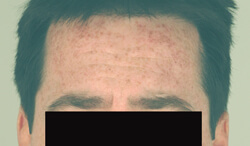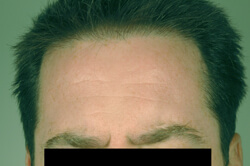Photoaging isn’t a term that describes how we start to look in pictures as we get older! Photoaging or photodamage are terms that refer to the visible signs of skin damage caused by ultraviolet light exposure (the sun). UV light comes in the form of both natural sunlight and indoor tanning (artificial) beds. Accumulated exposure to UV can profoundly age your skin making you look much older than you actually are.
Most of us are aware of the link between sun exposure and skin cancer. But fewer realize the link between sun exposure and premature aging. Although most of us use sunscreen at the beach, only a few bother to put on sunscreen for our normal daily routine. Regular use of daily sun protection is your most powerful weapon to keep your skin looking young (or younger!) than it truly is!


Sun spots before and after pictures
So, what does photodamage look like? Chronic, cumulative sun damage changes the texture, color and elasticity of our skin. It makes it look and feel rough. Dark patches can appear. UV also damages the deeper structural connective tissues which makes our skin thin, sallow, and saggy. These changes trigger the formation of fine lines and deep wrinkles.
If you’ve been to the dermatologist recently, you may have heard a few terms used to describe photoaging. Facial redness and spider veins refer to the development of small but visible blood vessels. Sun spots, liver spots, age spots and freckles are all terms used to describe the variety of dark, pigmented spots and patches that occur with prolonged sun exposure.
When it comes to treatments for photoaging, there are many over-the-counter creams that promise to work miracles, but buyer beware! While some stronger, physician-grade skincare products can help reduce the signs of photodamage, there is no one, single product that can reverse the signs of aging. Like Mom used to say, “An ounce of prevention is worth a pound of cure.” The best treatment for photoaging is to prevent from happening it in the first place!
If you’re really looking to improve the look, feel and luster of photodamaged skin, your best bet is laser treatment. Class IV medical lasers help with excess redness, blood vessels and spider veins, dark brown patches, and even fine lines and wrinkles.
If you choose to go this route, make sure that you find a trusted laser practitioner with a wide array of FDA-approved devices that target the specific features of your photodamage that bother you most. It is possible to reverse the signs of chronic sun exposure, but it requires finding a practice that offers a skillful, knowledgeable and comprehensive approach to the problem.

